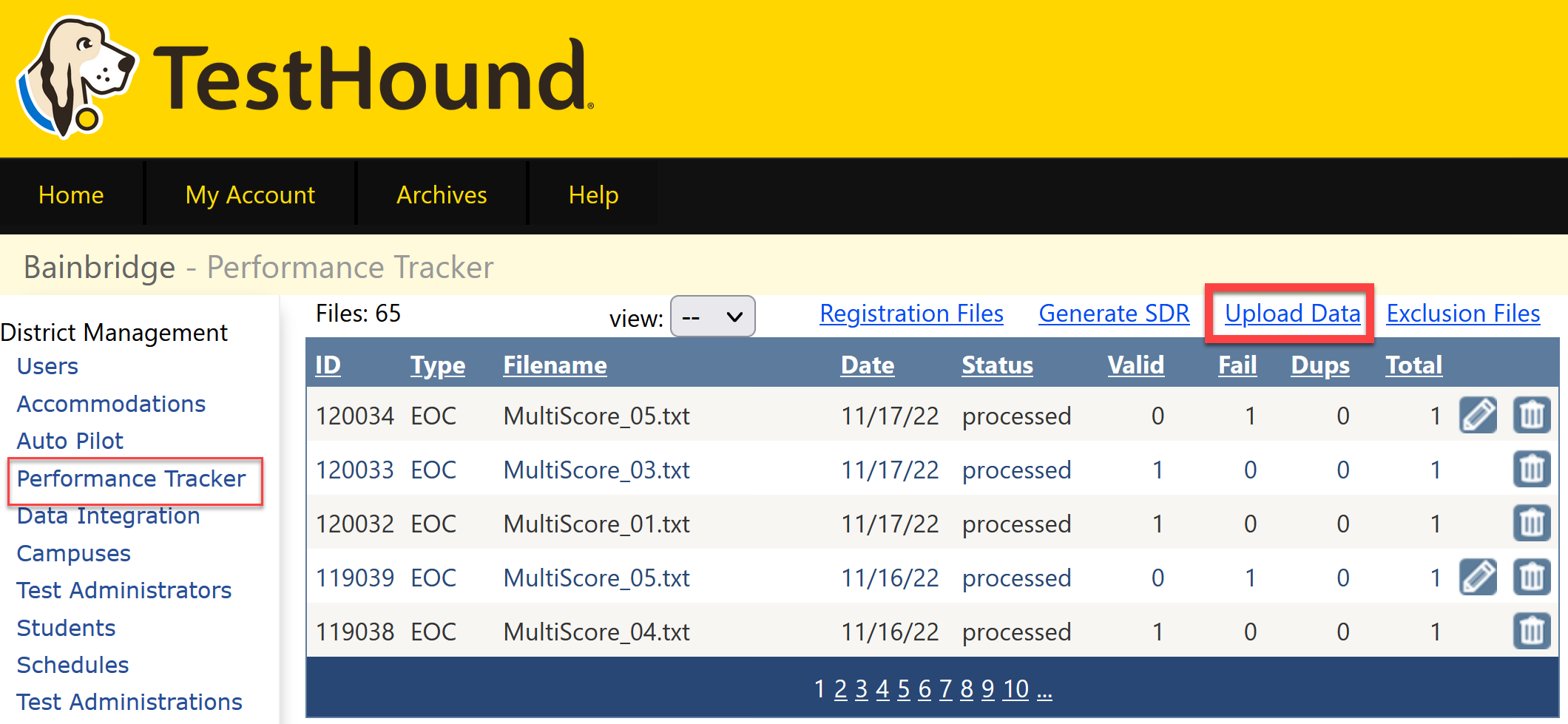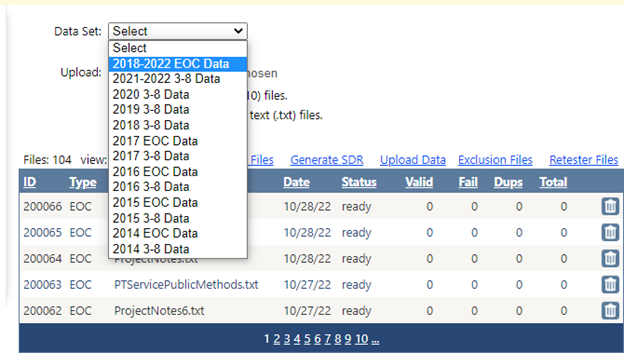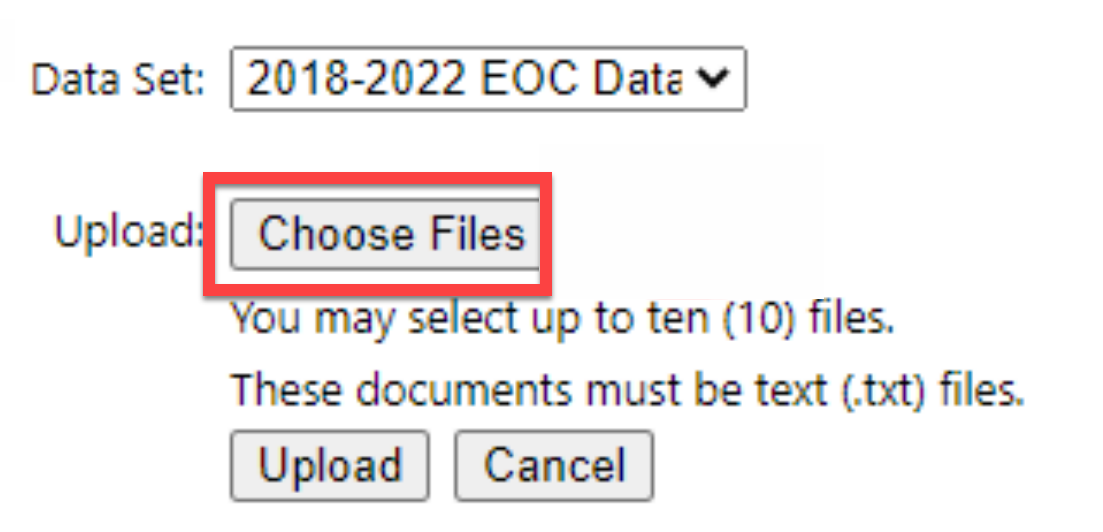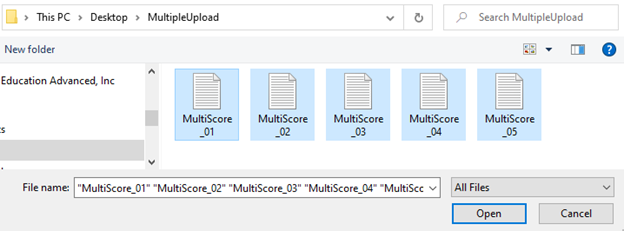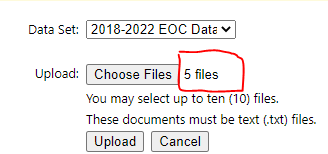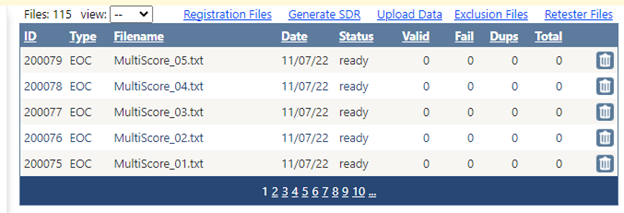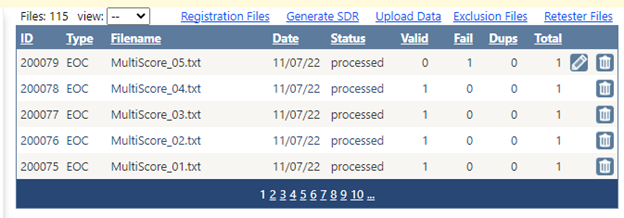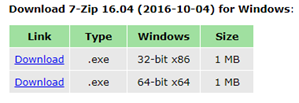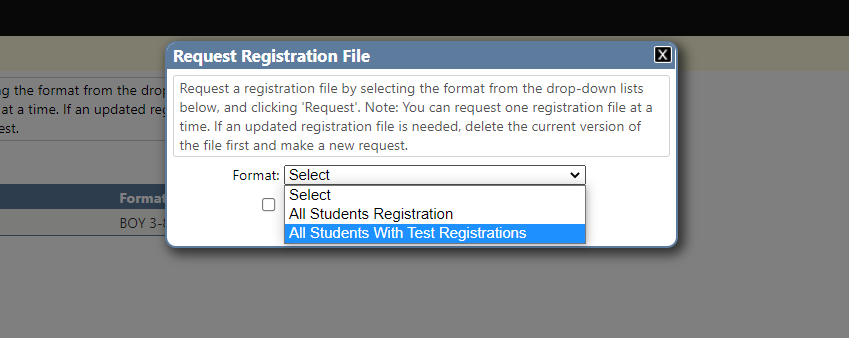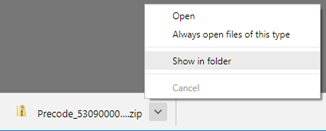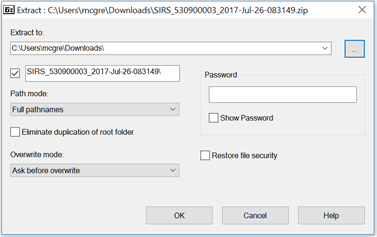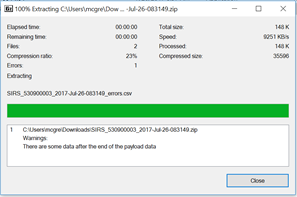Performance Tracker allows you to upload current STAAR and historical student score data files, generate Student Data Requests (SDR) files, and generate registration files.
| Expand | ||
|---|---|---|
| ||
To Batch Upload Score Files, click on the Performance Tracker tab in your District Management Menu and select Upload Data. A new window will open. Next, select a Data Set. Then select the “Choose Files” button. *Be sure to choose only .txt files. A maximum number of 10 files may be selected and processed per batch. To select multiple files for your batch, hold the ctrl button on your keyboard while selecting multiple files. All files chosen in the batch must match the same data set. Next, select the “Open” button. The selected file count will be displayed. Then select the “Upload” button to upload your files. After uploading, you will receive an email when the files have been processed. Each file will be displayed in your Performance Tracker table and show a status of ready. Once the files are processed they will show a processed status in the table. NOTE: When EOC data files are uploaded, Performance Tracker will pull in the cumulative test data records. |
...
| Expand | ||
|---|---|---|
| ||
Performance Tracker will allow the generation of a registration file that is uploaded to the state testing vendor to register students in TIDE. The “ All Student Registration “ file will allow you to upload all your TestHound students into TIDE for ease in pulling a Student Data Request in Cambium to obtain past student test performance. The “All Student Registration ” file will not register students for testing. It simply adds your students to the Cambium system. You can also generate an “All Students with Test Registrations” file. This will automatically flag students for test registration. Students do NOT need to be in a test in TestHound. (Campuses should process all student alerts (new, unenrolled, reenrolled) prior to this, to ensure student statuses are updated. ) This new process will pull all students in grades 3-8 in TestHound into the file based on enrolled grades. TELPAS students will be flagged for TELPAS registration based on their current EL status, and STAAR Alt students will be included based on that designation on their Accommodation page in TestHound. Retesters will be included using their performance history in Performance Tracker. Students who need to retest but do not have a performance history in TestHound can be added to the appropriate test in TestHound and then will be included in the file. STAAR 3-8 above grade level testers will need to be added to the appropriate test and then the Grade Level Report can be run to capture the above grade level flag and uploaded to TIDE. EOC students and STAAR ALT EOC students will be added for EOC registration based on the Course Association that will need to be performed by the district in the Schedule menu, Course Assoc. tab. Mapping each course required to take each test will ensure that the appropriate students are included in the registration file. Click the + on the right to add each course associated with that particular EOC test. Be sure to do all 5 Spring EOC courses and the STAAR Alt2 EOC courses as well. For detailed directions on the course, mapping click Here: How do I map EOC courses for Test Registration To extract the registration file from TestHound, download the 7-zip utility to open the encrypted file. (7-zip only works on PCs. Mac users will need to install a program such as KEKA or RAR Extractor) Navigate to the following web address to download the free 7-zip utility program: www.7-zip.org Once at the website, a table at the top of the web page will appear with the choices below: If unsure of the type that should be downloaded, select the link for the 32-bit version. Once the 7-zip utility is installed, return to TestHound. To generate a registration file, click Performance Tracker, and select Registration Files. Click Request Registration Select “All students with Test registration”. The file will begin to generate and you will receive an email when it is ready. You can return to the Registration page to download your file once it has been processed. Selecting Archive Student Demographic Data will allow the registration file to be archived and then used as a comparison for changes that need to be made to the answer document or in the online system. Once appropriate selections have been made, choose Request. Files are processed in a queue and the length of time to generate the file depends on the size of the district and the number of requests ahead of the file in the system. When the email is received with the notification of the registration file being ready, select Performance Tracker > Registration Files. A window will appear with the files that have been requested. Select the Download icon next to the appropriate file. A new window will open requesting a 12-character password and select Download to receive the file. This password will be used to open the encrypted file. When the file has been downloaded right-click or in Chrome select the arrow to the right of the file name, then choose Show in a folder. Open the Downloads folder on your computer to access the file. When in the Downloads folder a zipped folder titled Precode_ [District ID] _[Date] should appear. Right-click on the zipped folder and choose 7-Zip > Extract files. A new window will open prompting the selection of a location where the files will be extracted and to enter the password that was created when generating the file in TestHound. Next, select OK. The window below will open indicating when the files have been extracted. When the process is complete, select Close. A new folder will appear within the designated location. Open the folder and within there will be two files. The first file will be the registration file that can be submitted to the vendor to register students for testing. The second file Precode_[District ID]_Date_errors contains records indicating students who have incomplete data in the demographics file being submitted by the district and can be used to clean up the data being received through the demographic file. If you selected Archive Student Demographic Data, when you requested the file, campuses can compare the current demographic information for their campus against what was archived at the time you pulled the registration file, to note differences that would need to be updated either on the answer document or in the online system of the vendor. |
...
